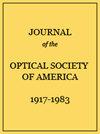An ion mobility mass spectrometer coupled with a cryogenic ion trap for recording electronic spectra of charged, isomer-selected clusters.
Journal of the Optical Society of America and Review of Scientific Instruments
Pub Date : 2022-04-01
DOI:10.1063/5.0085680
引用次数: 8
Abstract
Infrared and electronic spectra are indispensable for understanding the structural and energetic properties of charged molecules and clusters in the gas phase. However, the presence of isomers can potentially complicate the interpretation of spectra, even if the target molecules or clusters are mass-selected beforehand. Here, we describe an instrument for spectroscopically characterizing charged molecular clusters that have been selected according to both their isomeric form and their mass-to-charge ratio. Cluster ions generated by laser ablation of a solid sample are selected according to their collision cross sections with helium buffer gas using a drift tube ion mobility spectrometer and their mass-to-charge ratio using a quadrupole mass filter. The mobility- and mass-selected target ions are introduced into a cryogenically cooled, three-dimensional quadrupole ion trap where they are thermalized through inelastic collisions with an inert buffer gas (He or He/N2 mixture). Spectra of the molecular ions are obtained by tagging them with inert atoms or molecules (Ne and N2), which are dislodged following resonant excitation of an electronic transition, or by photodissociating the cluster itself following absorption of one or more photons. An electronic spectrum is generated by monitoring the charged photofragment yield as a function of wavelength. The capacity of the instrument is illustrated with the resonance-enhanced photodissociation action spectra of carbon clusters (Cn +) and polyacetylene cations (HC2nH+) that have been selected according to the mass-to-charge ratio and collision cross section with He buffer gas and of mass-selected Au2 + and Au2Ag+ clusters.离子迁移率质谱仪与低温离子阱耦合,用于记录带电的电子能谱,异构体选择簇。
红外光谱和电子光谱对于理解气相带电分子和团簇的结构和能量特性是必不可少的。然而,同分异构体的存在可能会使光谱的解释复杂化,即使目标分子或簇事先被大量选择。在这里,我们描述了一种仪器,用于光谱表征带电分子团簇,这些分子团簇是根据它们的异构体形式和质量电荷比选择的。利用漂移管离子迁移谱仪和四极质量过滤器,根据与氦缓冲气体的碰撞截面和质荷比,对固体样品激光烧蚀后产生的簇离子进行了选择。迁移率和质量选择的目标离子被引入低温冷却的三维四极离子阱中,在那里它们通过与惰性缓冲气体(He或He/N2混合物)的非弹性碰撞而热化。分子离子的光谱是通过用惰性原子或分子(Ne和N2)标记它们来获得的,这些惰性原子或分子在电子跃迁的共振激发下被移除,或者在吸收一个或多个光子后将簇本身光解离。电子光谱是通过监测作为波长函数的带电光碎片产率而产生的。根据质量电荷比和与He缓冲气体的碰撞截面选择的碳簇(Cn +)和聚乙炔阳离子(HC2nH+)以及大量选择的Au2 +和Au2Ag+簇的共振增强光解作用光谱表明了该仪器的能力。
本文章由计算机程序翻译,如有差异,请以英文原文为准。
求助全文
约1分钟内获得全文
求助全文

 求助内容:
求助内容: 应助结果提醒方式:
应助结果提醒方式:


